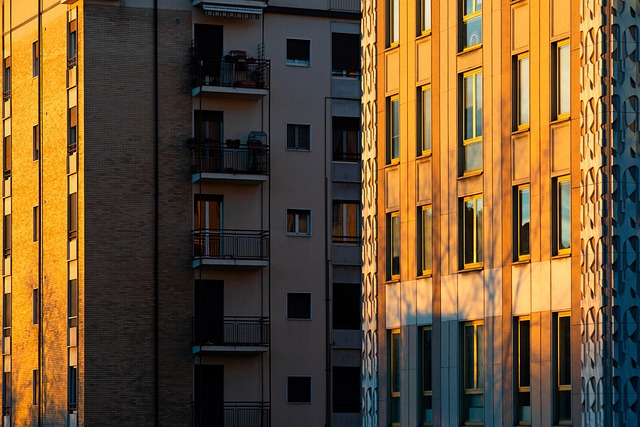Assess your apartment's unique security needs before installing a portable DIY alarm system, considering factors like access points and local break-in rates. Gather essential materials including a motion sensor, power source, and sound component. Strategically place the motion sensor for comprehensive protection. Conduct thorough testing to ensure the system's effectiveness, including simulating scenarios and checking connectivity. Regular testing allows you to upgrade to better protection as needed, enhancing convenience and security for your DIY apartment solution.
“Strengthen your apartment’s security with simple, do-it-yourself (DIY) alarm solutions. In today’s digital age, understanding your space’s vulnerabilities is key. This guide navigates creating effective portable DIY alarm systems, catering to diverse security needs. From gathering essential materials like motion sensors and sirens to assembling and testing your personalized system, we empower you to take control of your safety. Elevate your apartment protection with these practical, affordable measures.”
- Understanding Your Apartment Security Needs
- Gathering Materials for a Portable DIY Alarm System
- Assembling and Installing Your Personalized Alarm
- Testing and Enhancing Your DIY Apartment Protection Solution
Understanding Your Apartment Security Needs

Before setting up any alarm system, understanding your apartment’s specific security needs is paramount. Portable DIY alarm systems offer a flexible solution for renters who want to protect their spaces quickly and effectively. These systems are designed to be easy to install, often requiring no drilling or wiring, making them ideal for apartments with strict leasing agreements or for those looking for temporary protection while moving between places.
Each apartment has unique vulnerabilities—from broken windows to unsecured doors—so consider your specific concerns. For instance, if you live in a high-rise with easy access from the rooftops, motion detectors might be crucial. Or, if break-ins are prevalent in your building, combining door and window sensors with a portable alarm system can provide an extra layer of security.
Gathering Materials for a Portable DIY Alarm System

Creating a portable DIY alarm system is an affordable and practical way to enhance your apartment’s security. To get started, gather essential materials that will enable you to build an effective protection mechanism. A key component is a motion sensor, which can detect movement within a specified range. These sensors are readily available at hardware stores and online retailers. Additionally, procure a portable power source like batteries or a small solar panel charger to ensure your alarm remains operational even without access to electricity.
For the sound component, consider using an old smartphone or tablet with a loudspeaker. By repurposing these devices, you can leverage their built-in speakers to produce an ear-piercing alarm sound when activated. Alternatively, simple alarm chimes or bells can be purchased and integrated into your system. Other useful items include wire, a small box for housing the components, and adhesive tape or a secure mount for fixing the motion sensor at strategic points around your apartment.
Assembling and Installing Your Personalized Alarm

Assembling your personalized alarm is a straightforward process, making it one of the key advantages of portable DIY alarm systems. Start by collecting your materials: a motion sensor, a loud siren, and a battery pack with sufficient power for prolonged use. Connect the motion sensor to the siren using simple wiring or plug-and-play connections, ensuring they are securely fastened. Position the sensor in a strategic location, like a window or door frame, where it can detect movement efficiently. Then, mount the siren in an easily accessible area to deter potential intruders.
For installation, consider your apartment’s layout and security needs. Place the alarm system near entry points, ensuring it is visible and within reach for quick activation. Test the alarm thoroughly to verify its functionality and adjust sensitivity settings as needed. With these simple steps, you’ve created a powerful, personalized protection tool that enhances your apartment’s security in no time.
Testing and Enhancing Your DIY Apartment Protection Solution

After setting up your portable DIY alarm system, it’s crucial to test its effectiveness before relying on it for protection. Start by simulating various scenarios, such as testing the motion sensors to ensure they trigger accurately and verifying that the alarm sounds loud enough to deter potential intruders. Additionally, check the connectivity—whether it’s Wi-Fi or Bluetooth—to make sure your smartphone receives alerts promptly.
Regular testing will enhance your DIY apartment protection solution, allowing you to identify any weaknesses and make necessary adjustments. Consider adding extra sensors for dead zones or upgrading to a system that offers remote arming and disarming for enhanced convenience and security.
In just a few simple steps, you can transform your apartment’s security with a portable DIY alarm system. By gathering readily available materials and personalizing your setup, you gain peace of mind and control over your safety. This article has guided you through the process, from identifying your security needs to testing and refining your new protection solution. With these practical tips, you’re now equipped to protect your space effectively and affordably.
